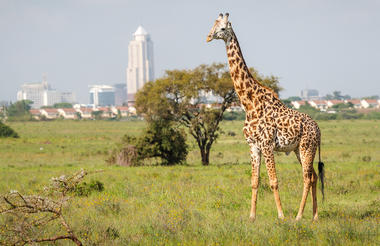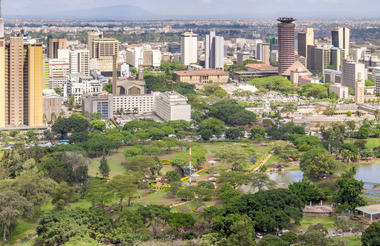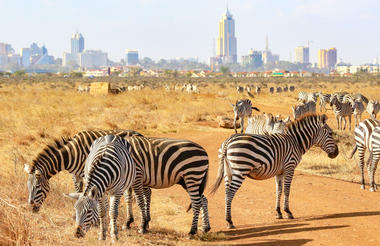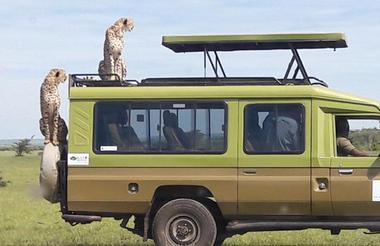Nairobi is Africa’s 4th largest city and is a vibrant and exciting place and although it has developed a reputation which keeps tourist visits brief there are some fascinating attractions: its café culture, unbridled nightlife, the National Museum, the Karen Blixen Museum and most notably just 20 minutes from the city centre wild lions and buffalo roam in the world’s only urban game reserve.






Situated in southwestern Kenya, the Masai Mara encompasses the celebrated national reserve and its surrounding community conservancies, forming part of the Greater Serengeti–Mara ecosystem. Rolling savannahs, dotted with acacia trees and crossed by the Mara River, create a rich and varied landscape. Vast herds of wildebeest, zebra, and antelope graze across the plains, while elephants, giraffes, and buffalo roam freely. The river’s lush banks support hippos and crocodiles and sustain wildlife throughout the dry season. Predators are abundant, with lions, leopards, cheetahs, and hyenas regularly seen in action. Each year, the spectacular Great Migration transforms the region, as millions of wildebeest and zebra traverse the plains. Visitors can soak up the breathtaking scenery, diverse wildlife, and Maasai cultural heritage in one of Africa’s most iconic safari destinations.

The Serengeti, together with Kenya’s Masai Mara Game Park, constitute Africa's most famous wildlife park, spread over the enthralling landscapes of northern Tanzania. This is a precious ecosystem, supporting the annual wildebeest migration through the Serengeti and the Masai Mara. The largest mass movement of land mammals on the planet involves more than a million animals following the rains, including more than 1.5 million white-bearded wildebeest and 250 000 zebras. Prides of lions, as well as groups of elephants, giraffes, gazelles, and eland, roam among the photogenic vast grass plains between weird-and-wonderful-looking acacia trees. Aside from traditional vehicle safaris, hot-air ballooning over the Serengeti plains and horse riding safaris are on offer.






Situated in the Crater Highlands in Northern Tanzania, the Ngorongoro Conservation Area is best known for its archaeological and geological significance, rich wildlife, and beautiful scenery. The conservation area encompasses the famous Crater, the renowned Olduvai Gorge and vast plains of grasslands, forests and mountains extending to the Serengeti. This 8000-square-kilometre protected area is recognised for its natural beauty and has been placed on the UNESCO World Heritage List. Visitors flock here to soak up the spectacular views of the Ngorongoro Crater, voted as one of the Seven Natural Wonders of Africa, it is famed for its natural beauty and abundant wildlife. Popular activities include: mountain biking, hiking, game drives, bush walks, and visiting a local Maasai village.










